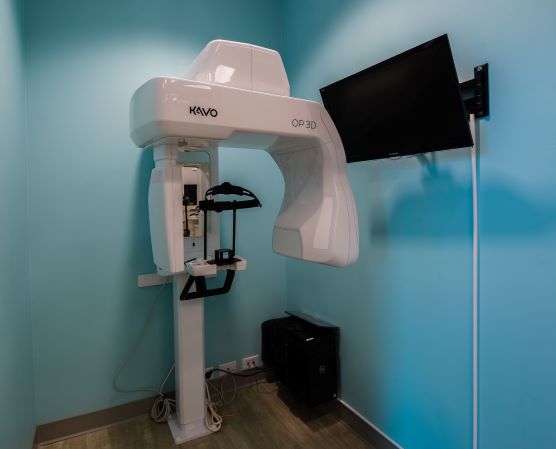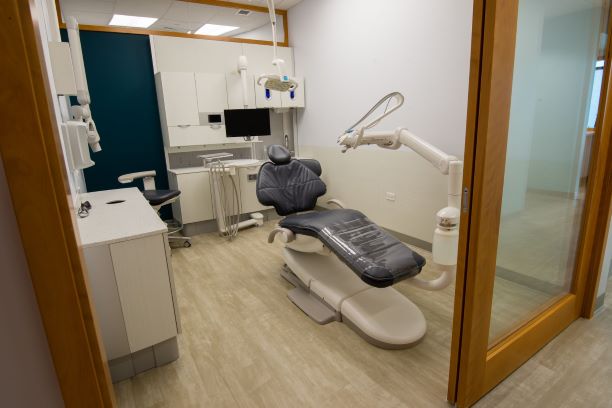What to expect at your initial exam:

Dr. Tran will take the time to review your medical history and dental history. She will perform a comprehensive evaluation of your mouth, as well as take any necessary X-rays. This is a way to assess your periodontal health by examining:
- Your teeth
- Your plaque
- Your gums
- Your bite
- Your bone structure
- Your risk factors
A detailed explanation of your exam, treatment recommendations, and treatment plan will be discussed with you at that time.
Procedures which may be recommended:

Scaling and root-planing (deep cleaning): A careful cleaning of the root surfaces to remove plaque and calculus (tartar) from deep pockets and to smooth the tooth root to remove bacterial toxins.
Pocket reduction surgery: A pocket reduction procedure is needed if you have pockets that are too deep to clean with daily at-home oral hygiene and a professional care routine. The treatment removes the disease-causing bacteria on the root surfaces. Irregular surfaces of the damaged bone are smoothed to limit areas where disease-causing bacteria can hide. In some cases, membranes (filters), bone grafts or tissue-stimulating proteins can be used to encourage your body’s natural ability to regenerate lost bone and tissue.
Reducing pocket depth and eliminating existing bacteria are important to prevent damage caused by the progression of periodontal disease and to help you maintain a healthy smile. Reduced pockets and a combination of daily oral hygiene and professional maintenance care increase your chances of keeping your natural teeth – and decrease the chance of serious health problems associated with periodontal disease.
Gum graft surgery: Gum recession is a result of aggressive brushing/flossing habits, thin tissue, periodontal disease, and tooth position. A gum graft can reduce further recession and bone loss, and to cover the exposed roots. The gum tissue is taken from either your palate or another donor source to cover the exposed root. This can be done for one tooth or several teeth to even the gum line and reduce sensitivity.
Crown lengthening surgery: Crown lengthening is usually recommended to make a restorative or cosmetic dental procedure possible. It can also improve a “gummy” smile because your teeth appear short. Crown lengthening adjusts the gum and bone level to expose more of the tooth so it can be restored or improve the aesthetics.
Dental implants: A dental implant is an artificial tooth root (usually made of titanium metal) that is placed into your jaw to hold a replacement tooth, bridge, or denture. Dental implants may be an option for people who have lost a tooth or teeth due to periodontal disease, an injury, or some other reason. Sometimes, bone grafting procedures may be needed to improve the bone quantity and quality at the implant site. After treatment, Dr. Tran will work closely with you and your dentist to develop the best care plan for you. Periodic follow-up visits will be scheduled to monitor your implant, teeth and gums to make sure they are healthy.
